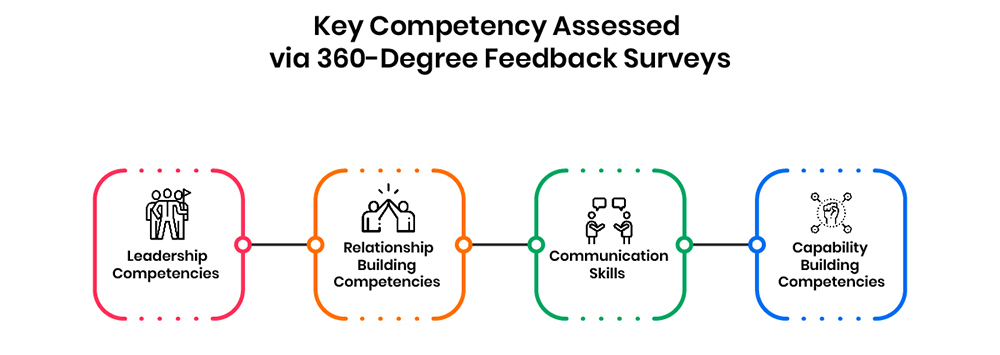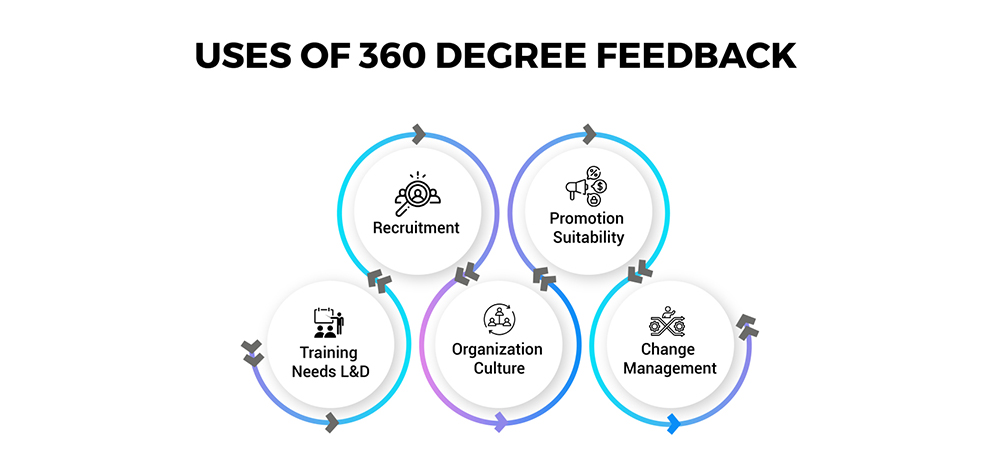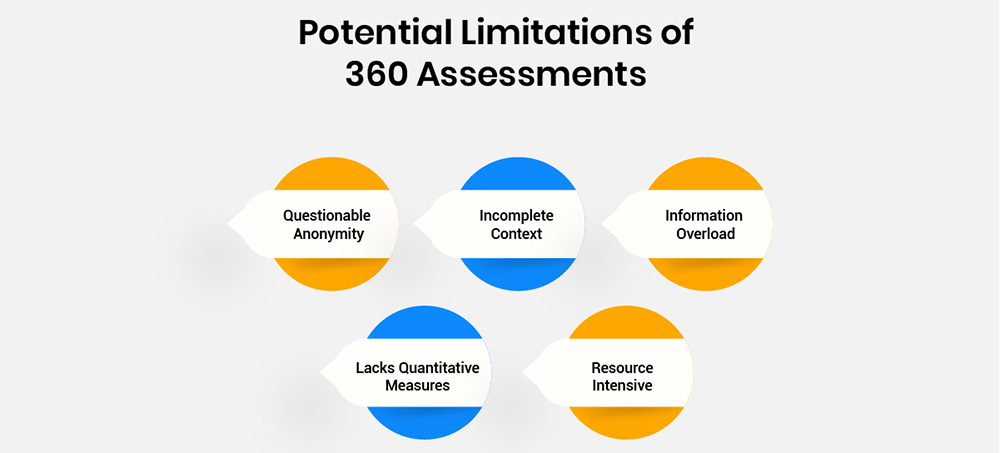
360-degree feedback, also known as multi-source or multi-rater feedback, is an invaluable tool for gathering perspectives on an employee's performance and abilities from various sources. This method provides a more well-rounded view of an individual's contributions, competencies, and behaviors compared to traditional single-source assessments.
In this article, we explore the mechanisms of 360-degree feedback surveys, their implementation in organizations, associated advantages and challenges, and how the power of perspectives can accelerate talent growth.
360-degree feedback collects perceptions about employees from different groups with whom they interact - like peers, direct reports, supervisors, and even external stakeholders. Participants rate an individual's skills and behaviors against a predefined set of performance parameters via questionnaires.
The aggregated feedback presents a holistic yet nuanced view of capabilities and improvement areas less discernible via standard manager reviews. By gathering multiple lenses on performance, 360s enable enriching discussions around career growth.
In a 360-degree feedback process, assessments are solicited from groups having adequate interactions with the employees under evaluation:
Collecting perceptions from people above, lateral to, and below an employee in the system brings forth a spectrum of perspectives highlighting otherwise less visible aspects.
360-degree feedback surveys evaluate an employee on key competencies that provide a holistic view of their performance and abilities. They go beyond just the core technical skills required and assess behavioral parameters crucial for individual and organizational success. Some key competency parameters assessed via 360-degree feedback surveys are:

Leadership Competencies
This focuses on leadership abilities like:
Relationship Building Competencies
This examines cross-functional partnership abilities such as:
Communication Skills
This overviews communication effectiveness on:
Capability Building Competencies
This evaluates competencies like:
Seeks and Delivers Developmental Feedback: Checks whether continuous bilateral feedback is enabled among teams to enhance collaboration and progress.
By covering a breadth of attributes beyond task execution, 360s provide a holistic overview of not just what employees achieve but how they achieve it via behaviors and collaborations.
Leadership development is the most common application of 360-degree feedback processes in organizations. High potential upper management or first-time people managers undergo 360 reviews to self-assess and improve their capabilities via feedforward.

But application possibilities also extend into:
While often used in organizational development, regular participation in 360 feedback presents immense value for any employee's self-driven growth journey as well.
360-degree feedback ushers in several advantages both for individuals and for organizational health:

Comprehensive Evaluation
With perspectives gathered from all around an employee, 360 feedback provides a much more well-rounded assessment of competencies and scope for growth. Teams get to highlight skill areas not visible to managers, enhancing context.
Boosts Self-Awareness
The collated feedback report offers employees an objective view of their abilities as seen by others, increasing consciousness around their strengths, development needs, and blind spots. This heightened self-awareness sparks growth.
Fosters Professional Development
Development areas illuminated through multi-source perspectives enable individuals to form targeted action plans towards skill enhancement goals with manager guidance.
Promotes Healthy Communication
Soliciting ongoing feedback from teams creates open channels of communication, trust, and better collaboration across hierarchies. Issues get addressed faster.
Identifies High Potentials
Beyond reviews, talent with leadership promise shines through via 360-degree evaluations, allowing their development into pipeline roles.
Strengthens Alignment
As teams rate each other's capability alignment to organizational values and culture, 360 feedback helps reinforce focus areas demanding collective improvement.
With such multifaceted benefits spanning individual employee advancement, managerial coaching, team relationships, HR career trajectory mapping and organizational development, 360-degree feedback delivers immense value.
However, some inherent constraints of the 360 methodology should also be mitigated to maximize its constructive impact:

Questionable Anonymity
Despite confidentiality being emphasized, raters may occasionally feel reluctant to be fully candid, while avoidance of bias cannot be guaranteed in all cases. This may skew results.
Incomplete Context
Peer groups from different teams may not have adequate context to accurately rate an individual if interaction opportunities are limited. This can cloud insights.
Information Overload
Collation of feedback from multiple sources may seem overwhelming and tough to parse for actionable insights by certain employees. Clear manager assistance is vital.
Lacks Quantitative Measures
Qualitative feedback alone cannot objectively track capability improvement over time. Using 360 assessments alongside quantified OKR tracking is ideal.
Resource Intensive
The entire process of preparing surveys, gathering responses, and analyzing them requires extensive effort and input from raters and talent management. Streamlining via digital tools is key.
Some vital best practices involve:
Thus, while requiring initial investments, formalizing 360 feedback processes with ongoing reviews delivers exponential returns across workforce development and organizational alignment.
At its core, 360-degree feedback draws power from perspectives - by gathering collective observations from teams, managers, and partners. This enables workers to recognize where their self-perception meets or diverges from how others view them at the workplace.
These external perspectives shine a light on skill gaps individuals rarely see themselves, serving as catalysts for self-improvement. Colleagues also get better positioned to offer support.
With confidentiality and qualitative insights powering the method, 360-degree feedback done right fosters a culture of radical candor where developmental conversations get normalized. Teams openly discuss strengths, blind spots, wins, losses, and areas for improvement without defensiveness or ego.
And the outcomes? Higher trust, better collaboration, skilled talent pipelines, and consistent achievement of organizational goals leveraging collective capability enhancements.
By embracing the power of perspectives, 360 feedback empowers employees to continually expand the canvas of individual and collective growth - enabling workplaces to thrive as progressive ecosystems that realize their people's full potential.

CredBadge™ is a proprietary, secure, digital badging platform that provides for seamless authentication and verification of credentials across digital media worldwide.
CredBadge™ powered credentials ensure that professionals can showcase and verify their qualifications and credentials across all digital platforms, and at any time, across the planet.

Please enter the License Number/Unique Credential Code of the certificant. Results will be displayed if the person holds an active credential from TMI.